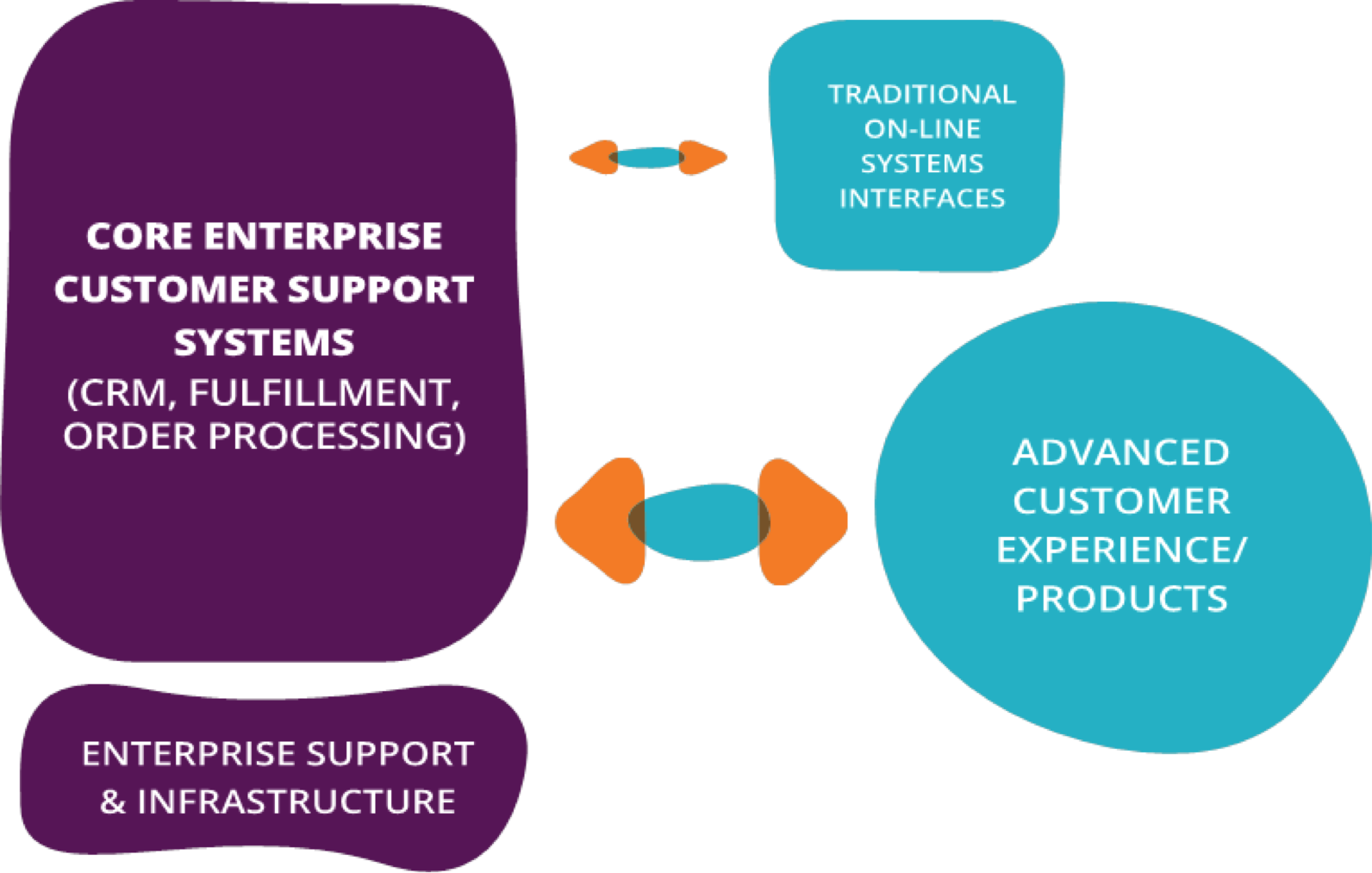
Redefining Operational Excellence in the Digital Age
A number of years ago in Atlanta, GA my wife and I went to purchase a chair for our living room. We shopped around and ended up at the Chair Warehouse (fictitious company). We wandered around a bit before deciding on a particular chair and found a salesperson to complete the paperwork. After going through the paper shuffling and writing a check (remember checks?), we asked where we could pick up the chair. “Oh,” said the salesperson, “you will have to come back tomorrow to pick up the chair.” “But,” I countered, “the chair is right there, I can see it, why can’t we take it home now?” “Our computer system processes paperwork and issues picking tickets overnight,” the salesperson sheepishly countered.
This story reflects a business mired in internal efficiency, not customer experience. Many companies suffer from years of this operational efficiency mindset that focuses on cost reduction. The unintended results include inflexible systems, complexity, high technical debt, customer dissatisfaction, and an efficiency-driven culture. Exactly the opposite of what we need for the digital age.
Operational excellence was touted as one of three fundamental business strategies in Michael Treacy and Fred Wiersema’s 1995 management classic Discipline of Market Leaders (the other two strategies were product leadership and customer intimacy). One sentence sums up their approach to operational excellence, “Everybody knows the battle plan and the rule book, and when the buzzer sounds, everyone knows exactly what he or she has to do.” Standardize, drive down transaction cost, eliminate variability—efficiency, efficiency, efficiency! Most core enterprise IT systems were built over the last 25 years reflects this efficiency strategy.
In today’s digital age we still need an operational excellence strategy, but of a different kind. Today we need excellence in operational agility.
Contrast our “chair” experience with that of someone entering the new Natural Markets Food Group (NMFG) store in Toronto. CTO Joshua Sigel and others saw an opportunity to create a totally new kind of store - they wanted to combine the food retail concept and the food service concept and supercharge it with technology. The entire design, from layout, to products, to extensive use of technology, was built around providing an exceptional, but uniquely tailored, customer experience. Whether you are sitting at the bar ordering food on a tablet or paying at checkout with your smartphone, or using the large touch-screen to browse offerings—NMFG enables your choice of a singular customer experience.

In the NMFG development process, the in-store new technology focused on getting the customer experience right. That effort was challenging, but doable. Integrating with the complex, inflexible legacy core enterprise systems was nearly not do-able. This contrast is widespread in other enterprises and reflects years of an operational efficiency strategy.
Several years ago a large retail firm wanted to replace store point-of-sale systems (and their back-office servers) with tablets connected using cloud technology. Their business objectives included improving customer experiences and saving costs. Unfortunately, their biggest obstacle was that the pipeline from their core enterprise systems to the cloud and tablets was narrow and full of gunk. To move forward, they had to first re-develop their core order processing system.
A growing number of companies are investing in revitalizing core systems. Why? Because customer experience applications demand greater and greater support from existing legacy systems—and that legacy technology is not responsive enough. Years of focusing on cost savings and efficiency has rendered many legacy systems unable to support the faster digital business cycle times. It’s not enough to have the capability to build mobile, cloud-based, device-infused customer experience applications, you have to integrate them with effective core enterprise support systems.

The un-responsiveness of these legacy systems has two main sources. First, the technical debt in many of these systems has severely hampered the ability to develop required enhancements with speed and quality. In a growing number of cases the legacy systems are so old and cranky that enhancements are nearly impossible. Furthermore, the time and cost to add functionality to these dinosaurs is almost impossible to estimate. They are unresponsive to the demands of new digital applications.
A second problem is the difference in delivery cycle time between digital experience and legacy development groups. In less turbulent times the fact that one of these groups was agile and operated on 2-week delivery cycles and the other used traditional methods and operated on a 9-month delivery cycle was a nuisance, but not debilitating. Increasingly that difference in delivery cycle time causes big problems. This disconnect is compounded by differences in release cycle times, particularly when continuous delivery is used in one case and not the other.
We need to get creative about how to invest limited resources to revitalize core enterprise systems. An obvious choice, rewriting these systems, is an expensive and usually high-risk strategy—one to be pursued carefully. Fortunately, there are a wide range of options between doing nothing and rewriting—revising to a services architecture (including microservices), decoupling and wrapping, employing continuous delivery, and more.
It won’t be enough to just get the delivery model right. Another reason operational efficiency has taken priority over operational agility is the investment classification systems used in many enterprises. There are a number of classification schemes being used today, but they generally follow along the lines of that offered by MIT’s Computer Information Systems Research group: Infrastructure, Transactional, Informational, and Strategic. In this scheme, maybe 10-15% of the portfolio is deemed “strategic” and the rest is thought of as core enterprise systems, those where efficiency is king.
The need for agility in the digital age extends far beyond “strategic” systems and revamping investment categories is one way to emphasize this. What if we revise the scheme to reflect the new digital age reality to: customer experience systems (a mobile app), customer experience support systems (order processing), internal support systems (accounting), and infrastructure (servers). If we think of a scale that ranks needs from efficiency (1) to agility (5), then customer experience systems might need to be a 5, customer experience support systems a 3-4, internal support systems a 2, and infrastructure a 3).
Enterprises that have pursued operational efficiency are now hampered in their quests to become digital businesses by that very strategy. It’s not an impossible mission. Apple is noted for its product excellence, and also for its low-cost manufacturing. Responsiveness and efficiency are not mutually exclusive, but one needs to be the driver and the other the constraint.
Starting now, focus on operational agility as your operational excellence strategy.
This article is part of a series about responsive portfolio management, an investment management capability geared to the volatile, uncertain age of the digital business. Read What's the Hurry?, the first in the series.
Disclaimer: The statements and opinions expressed in this article are those of the author(s) and do not necessarily reflect the positions of Thoughtworks.














